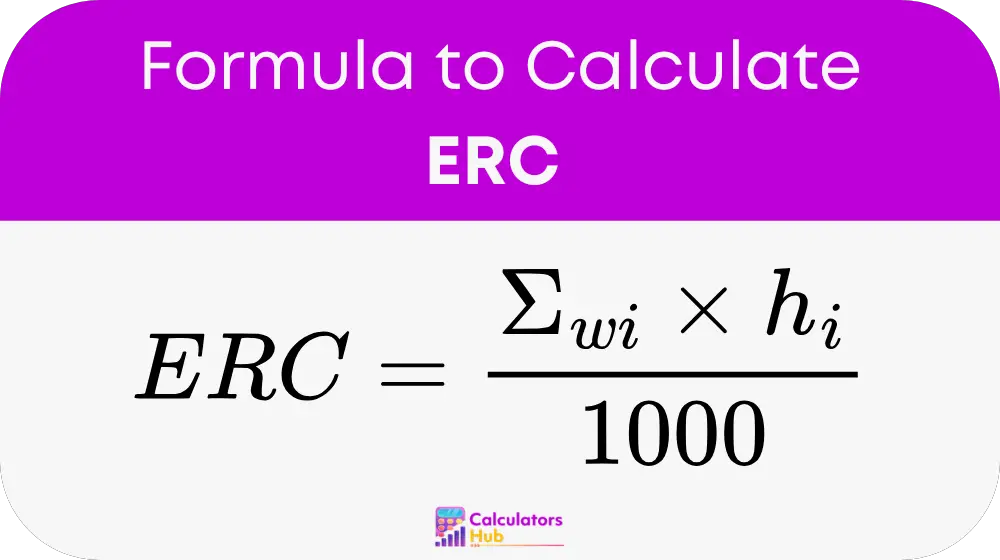The ERC (Energy Release Component) Calculator is a tool used to estimate how much energy a wildfire can release. It is part of the National Fire Danger Rating System (NFDRS) and helps fire managers assess fire behavior based on current fuel conditions. The calculator uses the dry weight and heat content of different fuel types to compute an index value that reflects potential fire intensity.
By calculating the ERC, professionals in forestry, emergency response, and environmental management can better prepare for and respond to fire threats. It helps guide decisions on staffing, equipment needs, and public safety measures, making it a critical resource in wildfire planning and prevention.
Formula of ERC Calculator

Where:
ERC = Energy Release Component (index value)
wᵢ = dry weight of fuel component i (in pounds per square foot)
hᵢ = heat content of fuel component i (in BTU per pound)
The summation Σ includes all relevant fuel types, such as:
- 1-hour fuels (e.g., grass and leaves)
- 10-hour fuels (small branches)
- 100-hour fuels (larger branches)
- Herbaceous materials
- Woody fuels
The division by 1000 is a conversion step that scales the result into an easily usable index format. The higher the ERC value, the more energy the fire can release, which usually means greater potential for fire spread and intensity.
Helpful Reference Table
Here’s a table to help users understand common ERC values and their general interpretation.
| ERC Value | Fire Danger Level | Typical Interpretation |
|---|---|---|
| 0–20 | Low | Moist fuels, minimal fire activity expected |
| 21–40 | Moderate | Some dry fuels, fire can spread slowly |
| 41–60 | High | Most fuels dry, moderate to rapid fire spread |
| 61–80 | Very High | Dry fuels and active fire behavior |
| 81+ | Extreme | Critical conditions, aggressive fire spread |
This reference can help emergency teams and land managers anticipate fire risk without manually calculating ERC from fuel data.
Example of ERC Calculator
Assume the following dry fuel data for a forested area:
- 1-hour fuel: w₁ = 0.03 lb/ft², h₁ = 8000 BTU/lb
- 10-hour fuel: w₂ = 0.05 lb/ft², h₂ = 8500 BTU/lb
- 100-hour fuel: w₃ = 0.07 lb/ft², h₃ = 9000 BTU/lb
Now apply the formula:
ERC = [(0.03 × 8000) + (0.05 × 8500) + (0.07 × 9000)] / 1000
ERC = (240 + 425 + 630) / 1000 = 1295 / 1000 = 1.295
So, the ERC index in this example is approximately 1.3, which indicates low fire potential. If the fuel loads or dryness increased, the ERC would be much higher, signaling more danger.
Most Common FAQs
A high ERC means that the available fuels are very dry and can release more heat during a fire. This leads to more intense and fast-moving fires.
You should update ERC daily during fire season using the latest fuel moisture and weather data to ensure accurate risk assessments.
Not exactly. ERC is one part of the larger Fire Danger Rating system. It focuses specifically on potential heat output from fuels, while fire danger includes many other factors like wind, humidity, and fire history.